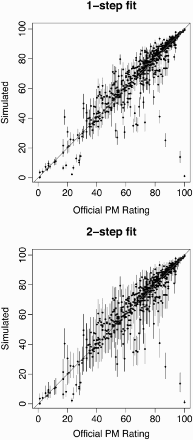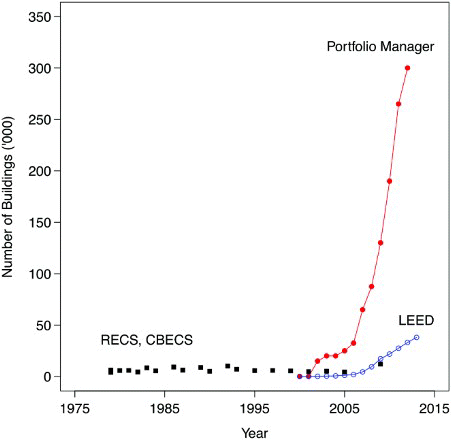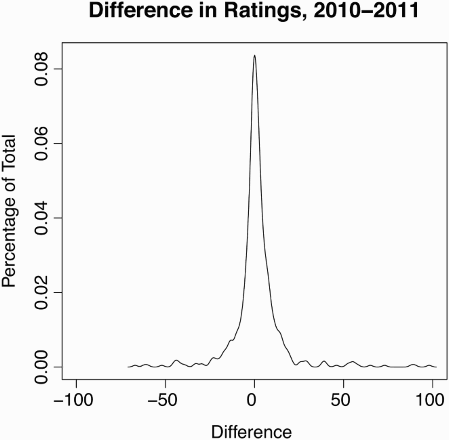Figures & data
Table 1 Descriptive statistics for New York City large commercial office buildings
Table 2 Commercial Buildings Energy Consumption Survey (CBECS) buildings sampled and weights by census division and climate zone, for office buildings > 4645 m2
Figure 1 Statistical uncertainty in Energy Star (ES) scoresNote: A diagonal line indicates a perfect correspondence between simulated scores with official reported ES ratings; dots indicate the simulated versus the official scores; and error bars show uncertainty from the first and second stage regression models

Table 3 Summary of simulation results for Energy Star (ES) scores in New York City data
Table 4 Quantiles of year-over-year difference in Energy Star (ES) scores
Figure 3 Growth in building energy data since 1980Note: Commercial Buildings Energy Consumption Survey (CBECS) and Residential Energy Consumption Survey (RECS) are sampling strategies designed to capture the entire US building population. Leadership in Energy and Environmental Design (LEED) buildings include all those that have been certified or registered.

Table 5 Disclosure laws by city or state
Figure 4 Data-gathering process. Source: adapted from Dasu & Johnson (Citation2003)

Figure 5 Strategies for structured dataNote: The highlighted left portion shows the data available (p1 fields, n rows in each group); the unshaded right portion shows where data are either missing or contained in an exogenous dataset (p2). Panel 1 (upper left) shows ‘internal comparisons’: how some columns in the dataset may conflict with one another; panel 2 (upper right) shows the ‘partitioning’ of records by different subgroups (n1, n2, … ) in the data; panel 3 (lower left) identifies ‘control groups’ in the data, i.e. key subgroups that can be compared with exogenous information (p2); and panel 4 (lower right) shows ‘external comparisons’ of aggregated statistics for select subgroups (n1, n2) with exogenous information (p2)


